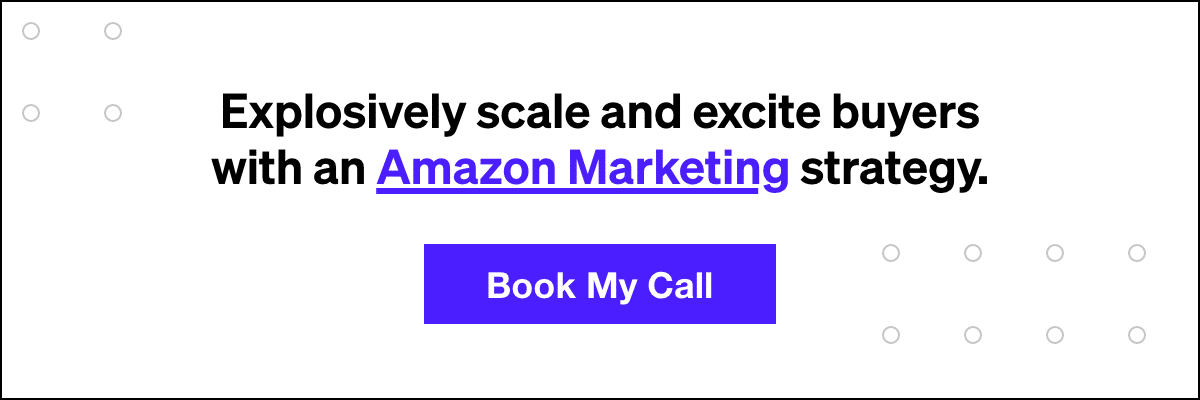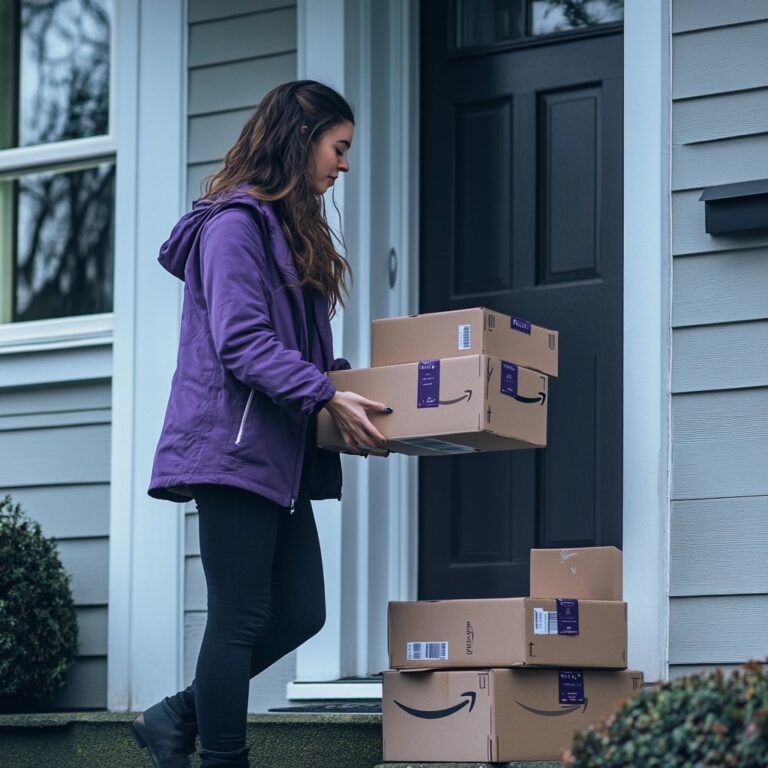How to Successfully Market For Amazon Prime Day

It’s shoppers’ favorite holiday again. No, we’re not talking about Black Friday or Cyber Monday—they’ve been all but usurped by Amazon Prime Day.
Since its inaugural day in 2015, Amazon Prime Day has grown in leaps and bounds, with sales on Amazon far outpacing Black Friday and Cyber Monday combined.
You read that right. Combined.
Every year Amazon Prime Day has grown. And from a digital marketing agency to market analysts, everyone expects this to be the biggest year yet. Whether you are a part of the Amazon Launchpad, Amazon Fresh, or any other retailer, how can you prepare your marketing strategy for this massive opportunity? Our guide has you covered.
What Is Amazon Prime Day?
Amazon Prime Day Sale began on July 15th, 2015, to commemorate Amazon’s twentieth anniversary. This year, it’s set to be a two-day event lasting from June 21st through the 22nd.
The 48-hour affair provides an Amazon prime member a Prime Day deal with a host of major discounts across all product categories, including apple watch, kindle, fire tablet, laptop deals, and even a Lightning Deal, which is an extremely limited time offer special.
To say that it’s a big day for sales would be to undersell it dramatically.
Here’s a snapshot of recent numbers:
- Third-party sellers—most of which are small and medium-sized businesses—surpassed $3.5 billion in sales on Prime Day—a nearly 60% year-over-year increase.1
- 75% of consumers in the US, UK, and Europe planned their Prime Day shopping event in advance, researching potential purchases and looking for a sneak peek or early access to the coming deals ahead of the Prime Day event2.
- Advertisers in 2020 saw 250% higher purchase rates when using multi-channel campaigns compared to single-channel campaigns.3
While there are several strategies you can employ to prepare for Amazon Prime Day, our first piece of advice is simple—take advantage of the increased traffic across all channels in the days and weeks leading up to and into Prime Day.
It’s a massive opportunity to convert new customers and re-target old ones.
Prime Day Cross-Channel Best Practices
Whether your brand is Amazon-only, solely D2C (direct to consumer), or any combination of the two, we recommend a cross-channel methodology that uses the best of both worlds. Here are some best practices you can follow for any of those routes:
On-Amazon Strategy
For starters, it pays to prepare. Plan in advance for the big day. Typically, it’s wise to launch your marketing campaign 2-3 weeks before Prime Day. That way, would-be customers have time to hear about the message and get excited. Also, be sure to have every new piece of ad copy reference the impending sale.
As the big day approaches, closely monitor your CPC (cost per click) and CPM (cost per one thousand impressions) figures. In all likelihood, the CPCs/CPMs will increase as users start planning for their Prime Day shopping. Simultaneously, conversions may decrease as consumers are holding off on any purchases until the big day.
Prepare for the Rush
In preparation for the increased demand, it’s important that you raise bids on your target keywords leading up to Prime Day. This will let you get in front of increased “planning” traffic as well as event traffic when costs and sales will inevitably skyrocket.
Monitor your campaign closely throughout the two-day event so that you can allocate your standby budget if needed. After all, you don’t want to run out of budget halfway through the event, losing sales and killing momentum because of it.
Once the event is finished, be wary of the Prime Day hangover, leaving bidding costs high, without the same opportunity to convert.
Deeper Discounts = Differentiation & Bigger Wins
Typically, deals throughout the year will tend to be 10%-20%. For this, you’ll likely need to offer even better savings to stand out from all of the noise. If your budget can afford it, we recommend coupons and deals ranging from 25%-30%.
To ensure large sales, you can incite savings at a certain price point (i.e., 25% off when you spend over $100).
How to Utilize Display Campaigns
Display campaigns should have a much longer lead time than Search campaigns. Considering nearly three quarters of shoppers plan their purchases in advance, prospecting campaigns should launch 2-3 weeks ahead of the holiday to position your brand in front of new users. For that, consider using expanded In-Market and Lifestyle targeting campaigns to introduce your brand and capture new audiences.
In the days leading up to Prime Day, focus your efforts on retargeting campaigns as a way of continuously nurturing new users who are already in the planning phase.
Finally, remember that the lead-out from Prime Day is just as critical as the day itself. After it’s over, your retargeting pools will be some of the largest of the year, allowing you to capitalize on any users who didn’t convert during the holiday.
Continue nurturing your lapsed purchasers via retargeting as well as past purchaser targeting for brands like consumables and consumer-packaged goods.
Utilize advanced Amazon Strategies
To truly maximize the effectiveness of Prime Day, consider leveraging tools outside of those recommended above to create even more buzz around your brand and its products. Consider the following avenues:
- Amazon posts
- Amazon live
- Amazon influencer
- Amazon associates
- Brand store addition/customization
- Featured products
- Extended and early deals
- Father’s Day features
- OTT
- Audio ads
D2C and Amazon Strategy
The party isn’t only on the Amazon marketplace! In recent years, ecommerce across the board has seen a Prime Day “bump” and market analysts expect this trend will only be amplified as shopper awareness and retailer participation grow each year. To maximize Prime Day for both Amazon and D2C, follow these best practices:
- Utilize Amazon Attribution – Amazon Attribution is a free tool you can use to grow your business and optimize your marketing. Be sure to set it up in advance to better measure the effectiveness of your cross-channel to Amazon campaigns.
- Apply amazon deals – You can promote deals on products you also sell on Amazon by adding a “Shop this product on Amazon” or an “Amazon Add to Cart button” on the site in order to send traffic back to the marketplace.
- Match discounts on D2C – Offer to match any deals you’re putting on Amazon to your website. Amazon will automatically price-match across the web, so anything you put on your website must be matched on the Amazon marketplace (though tempting, don’t offer a better deal on your site compared to Amazon).
- Shift spend to Amazon – If you have finite spend to leverage during the Prime Day lead-up and event, consider shifting incremental dollars to your Amazon ad spend since traffic will be most concentrated on the site.
- Link to Amazon – Remember, ads should lead back to Amazon and ad copy should reference Prime Day.
D2C-Only
If you’re focused on direct to customer sales, your first task is to add discounts to your website. 87% of US shoppers agree that a discount offer will most strongly motivate them to complete a transaction after adding an item to their cart.4
But what if you can’t afford to drop prices?
If there are no discounts in the works, it may be smart to reduce ad budgets during the event so as to avoid paying premiums for traffic that’s unlikely to convert. You don’t need to rush this process. Let the data dictate it. Monitor the numbers closely to determine the best course of action.
Generally speaking, the Prime Day event results in increased traffic and conversion across all eCommerce sites. So it likely won’t limit traffic.
If you do plan on offering discounts, be sure to utilize your Prime Day ads in a clever way and to play them on or around the day itself since consumer awareness is closely tied to the shopping holiday.
IMPORTANT NOTE: Don’t use any Amazon trademarks (Prime Day, Prime, etc.) in marketing if they’re not leading directly to Amazon.com.
Take an Omnichannel Amazon Marketing Approach With Power Digital
In the lead up to and in the wake of Amazon Prime Day, you can create a seamless and integrated shopping experience for customers from the very first touch point. To maximize your campaign’s effectiveness, you need to take an omnichannel approach.
By utilizing all of your channels, you can create a unified messaging experience that’s aligned with your end goals. This cross-channel marketing strategy can be leveraged to improve the customer experience and build relationships through every channel and touchpoint.
But what areas should you focus on?
For Amazon Prime Day, we recommend that you focus on the following strategies:
- Email campaigns – According to Amazon internal data from Prime Day 2020, Prime Day email campaigns outperformed the average add-to-cart rate across all campaigns by 2.0x. Additionally, they outperformed the average purchase rate across all campaigns by 2.1x.
- Paid search – According to Amazon internal data from Prime Day 2020, Prime Day paid search campaigns outperformed the average detail page view rate across all campaigns by 1.7x.
- Paid social – Social media is one of the most powerful tools in your arsenal. And around Prime Day, you can’t simply rely on organic traffic. Instead, by leveraging user data, paid social, and influencer marketing, you can target ready-to-buy consumers on Instagram, Facebook, and TikTok.
- SMS – Few channels are as effective at reaching customers as SMS, much more so than email or other types of campaigns. With text message marketing averaging a 97% read rate and 45% of campaigns generating ROI, it’s easy to see why SMS is one of the most coveted marketing channels available.5
- PR and Affiliate Marketing – By partnering with the right team, you can gain access to strategic partners, media organizations, and content creators that can push positive messaging on your brand’s behalf.
- Customized content – Finally, it’s important that your blog posts, landing pages, and website copy are tailored to Amazon Prime Day sales and optimized according to Amazon’s algorithm. What works for Google SEO may not have the same impact as Amazon SEO. You need a team that can help you build custom content that aligns with the platform you’re pursuing.
This is where Power Digital comes in. As the leading digital marketing team that provides Amazon marketing services, we have the expertise, experience, strategies, relationships, and infrastructure necessary to boost your brand’s performance.
Whether it’s creating specific campaigns for Amazon or enacting a comprehensive marketing strategy, we know what it takes to stand out every day, including Prime Day.
Want to see what we can do for you? Reach out now, before the big day arrives.
Sources:
- Amazon Press Center. Amazon Prime Day 2020 Marked the Two Biggest Days Ever for Small & Medium Businesses in Amazon’s Stores Worldwide. https://press.aboutamazon.com/news-releases/news-release-details/amazon-prime-day-2020-marked-two-biggest-days-ever-small-medium
- McKinsey. The Amazon Prime Day Effect: Consumer Anticipation and Excitement Grows in 2019. https://www.mckinsey.com/business-functions/marketing-and-sales/solutions/periscope/our-insights/surveys/the-amazon-prime-day-effect-consumer-anticipation-and-excitement-grows-in-2019
- Omnisend. The 2020 Marketing Automation Statistics Report. https://www.omnisend.com/resources/reports/omnichannel-marketing-automation-statistics-2020/
- eMarketer. Types of Messages that Will Most Strongly Motivate US Internet Users to Complete a Transaction after Placing a Product in their Digital Cart.
- Business. Text Message Marketing: The Ultimate Mobile Engagement Tool. https://www.business.com/articles/text-message-marketing-benefits/
- https://www.emarketer.com/chart/232000/types-of-messages-that-will-most-strongly-motivate-us-internet-users-complete-transaction-after-placing-product-their-digital-cart-oct-2019-of-respondents
Our Editorial Standards
Reviewed for Accuracy
Every piece is fact-checked for precision.
Up-to-Date Research
We reflect the latest trends and insights.
Credible References
Backed by trusted industry sources.
Actionable & Insight-Driven
Strategic takeaways for real results.





